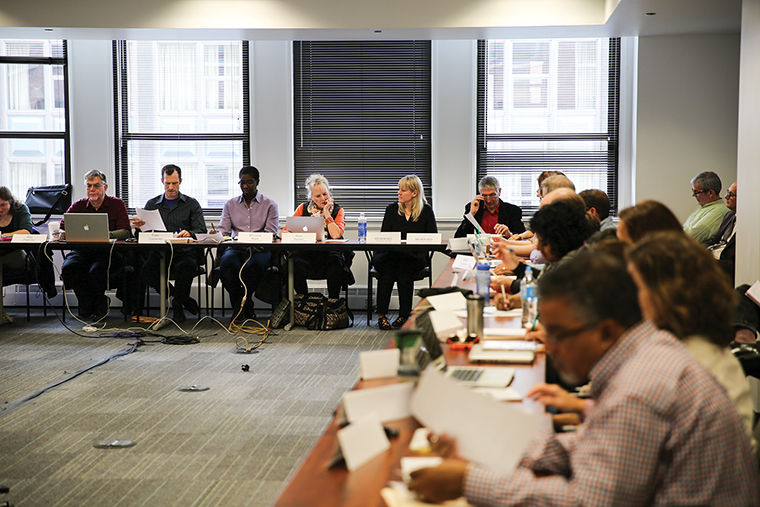Art + Design Department slated to split in two
October 6, 2014

Administrators, including John Green, interim dean of the School of Fine and Performing Arts, and vice president and provost Stan Wearden, attended the Faculty Senate meeting Oct. 3 during which the senate discussed its concerns surrounding the restructuring of the Art + Design Department and the senate’s provost appointment policy.
In an effort to properly allocate resources and better address art + design students’ needs, the college will begin to separate the Art + Design Department into two separate entities—the Design Department and the Art + Art History Department.
During a faculty senate meeting Oct. 3 in the 600 S. Michigan Ave. Building, the senate met with administrators to discuss upcoming changes for the new departments, including hiring new department chairs, dividing the current faculty into the separate departments and redistributing the Art + Design Department’s resources.
“We’re really grateful that this is being brought to the senate,” said Peter Carpenter, faculty senate president and associate professor in the Dance Department. “This is a change from how other institutional realignments were being handled [when] the [department] chair found out at the same time that everyone else did.”
There will be no immediate curriculum changes for current art + design majors, said Joan Giroux, associate chair of the Art + Design Department.
The department and the Student Government Association are hosting an open forum Oct. 8 at Hokin Hall in the 623 S. Wabash Ave. Building. during which students will ask questions and express concerns,
Giroux said. However, the preliminary plan will not be released to the public until it has undergone more review, according to Kelli, interim associate dean of the School of Fine & Performing Arts.
After collecting input from faculty members on how to best restructure the Art + Design Department, a plan was drafted detailing a potential new structure for the department and distributed to the faculty senate for review, according to Connell.
Although the departments will be split, the restructuring is meant to allow collaborations between students in different departments, Connell said during the meeting.
“Even though we aren’t splintering into multiple smaller departments, bridges are formed to allow those collaborations to happen,” Connell said. “Once these two departments are formed, some cross-school committees formed with like-minded colleagues being able to discuss … initiatives that make sense across schools.”
The measure is meant to give students the chance to take advantage of the art and design scopes, said John Green, dean of the School of Media Arts, during the meeting.
“The historic structure of the Art + Design Department makes it impossible to move forward despite everyone’s best efforts,” Green said. “[The plan] gives us the opportunity to start thinking strategically and college-wide about sharing resources.”
The restructuring process will group together faculty members with similar pedagogical ideas, Connell said, adding that differing ideas about how to teach art and design have stopped the department from implementing changes.
“It’s more [about] aligning practitioners with similar philosophies and that that can help develop the growth of both [art and design] programs,” Connell said during the meeting. “Historically, the difference in opinion of those philosophies [has] hindered growth where it really could have helped if [the programs] were separated.”
Interim chairs for these departments will be appointed next fall, according to Green.
Greg Foster-Rice, associate professor in the Photography Department, said during the meeting that it would be beneficial for the college to appoint a chair from within the college, because he or she would have sufficient knowledge of Columbia’s structure.
The faculty senate’s standing committees will send in feedback regarding the proposed changes in the Art + Design Department and create a motion for the restructuring plan, which the senate will vote on at their next meeting, Carpenter said.
Though restructuring processes for other departments have not been as inclusive in the past, having extended and open discussions between faculty and administrators makes the restructuring process easier, Carpenter said.
“If we put a lot of heads together in a room about it who are really smart people about a really complex problem, we can come to a better understanding about how to do it right,” Carpenter said.







